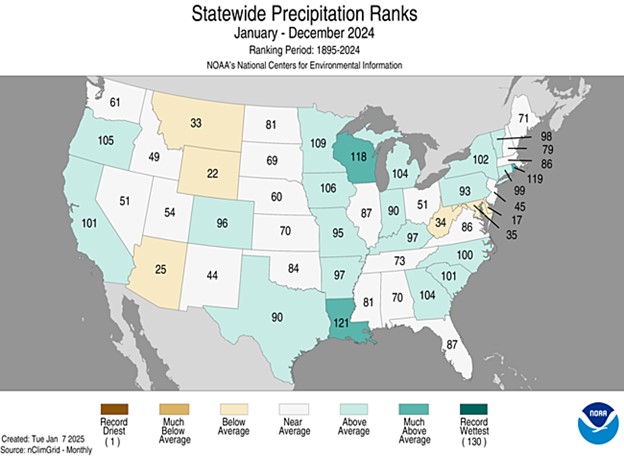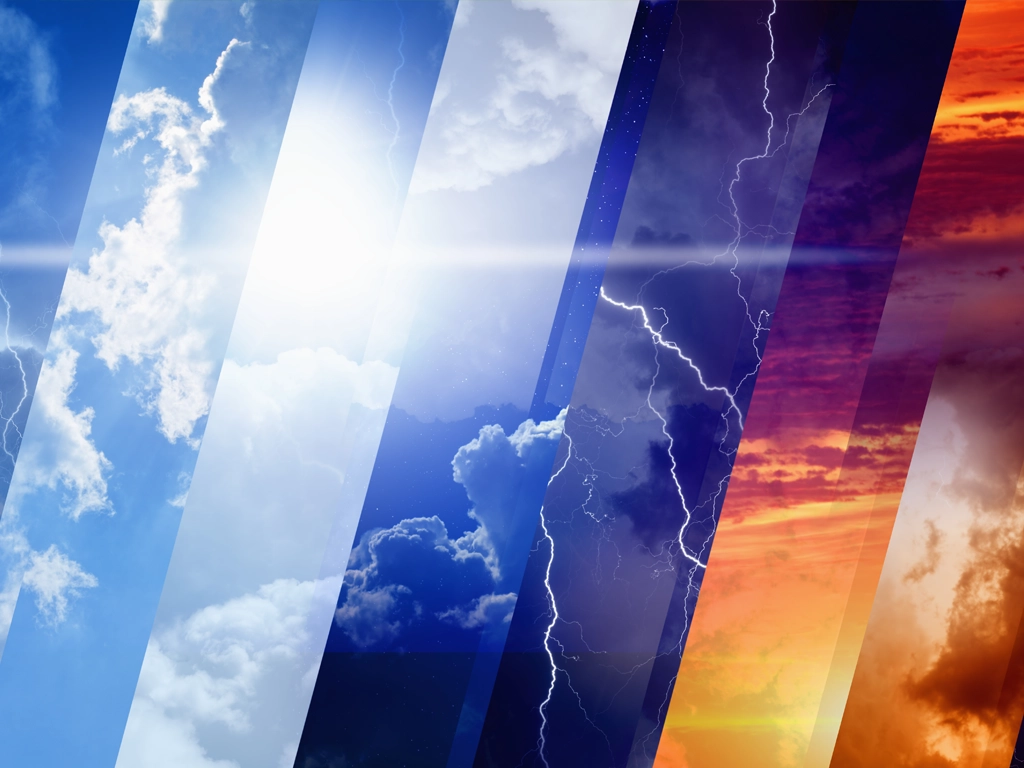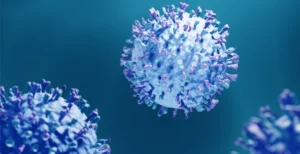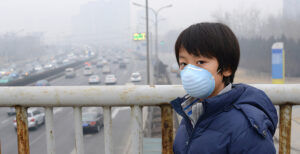Spring has sprung! Flowers are blooming! Birds are singing! Molds are sporing?! Wildfires are raging!?!? Hmmm, perhaps it’s once again time to dig into the National Oceanic and Atmospheric Administration’s (NOAA’s) weather predictions and anticipate how they may affect air quality. Here’s what you’ll see in your climate region over the next 12 months.
Grading Last Year’s Predictions

Image Credit: NOAA
Last year, we predicted a warm and wet year for most Eastern regions. When it comes to temperature, we were correct; 2024 was the warmest year on record for 15 eastern states, and in the top 10 warmest years for all others.
Regarding precipitation, about half the eastern states had wetter-than-average years, Rhode Island being the most deluged state. We seem to have been mostly correct about the Gulf Coast’s unusually dry fall/winter, even if Mobile did get some unexpected relief around the holidays. We also correctly foresaw Michigan’s precipitation spikes in the summer and in December.
However, West Virginia, Delaware, and Maryland actually had unusually dry years despite us singling out West Virginia as the specific focus of the rain clouds’ ire. Also, the northeast had a record-breaking drought last autumn. Thus, this year we will err on the side of a drier forecast.
Southeast Climate Region (AL, FL, GA, NC, SC, & VA)
Last year, the temperature was less extreme than expected (ever-so-slightly), but we still anticipate a warm year. The precipitation picture will be interesting yet complex.
| Last Year’s Prediction | Last Year Actual | NOAA's Prediction This Year | Our Prediction This Year | |
|---|---|---|---|---|
Summer | Warm | Average | Average | Average | Warm | Wet | Warm | Wet |
Fall | Warm | Dry | Warm | Average | Warm | Wet | Average | Varied |
Winter | Warm | Dry | Varied | Dry | Warm | Dry | Varied | Dry |
Temperature
NOAA predicts that the entire region will see a 33-50% chance of higher-than-average temperatures for the entire 12-month period. The Gulf Coast region and Florida have a 60% chance of abnormal temperatures in May and June this year. The closer one is to Appalachia, the greater the likelihood your seasonal temperatures will be normal.
Factoring in last year, we have tempered our own prediction to a hot-but-not-quite record-breaking year, with chaotic spikes and dips over the winter.
Precipitation
Expect an increasingly wet spring, followed by a rainy summer and early fall. Around the holidays, precipitation will return to normal very temporarily. Then the region will become drier-than-average until Spring of 2026, with the exception of counties far inland. Central Florida has the highest chance of precipitation extremes.
That being said, this region is so large that we expect a slightly more complex picture, especially at the turn of the seasons along the Gulf coast.
Air Quality
Keep an eye out for the following weather-induced air quality problems this year:
- Tree & Weed Pollen: A warmer spring/summer may mean an early start to allergy season, as trees and weeds begin releasing pollen early, prompted by spring warmth. That being said, a longer season can also drive the daily pollen count down.
- Mold: According to one study published in Scientific Reports, “Mold concentrations were[…]observed to be significantly associated with lagged values of precipitations, suggesting that increased rainfall leads to increase in mold spores up to [6] months in the future.” Thus, expect a high proliferation of mold this fall when the rainy summer turns to a cooler autumn.
- Airborne Pathogens: A hot, humid summer will drive people inside to the AC, possibly leading to a spike in the spread of respiratory viruses during this time.
- Wildfire Smoke: Expect wildfires in late fall or early winter as the season begins to turn towards drought. As the Carolinas are already dealing with wildfires, this should come as no surprise.
Regional AQ Prescription: Practice especially strict fire safety during any holiday barbeques.
Investing in an air purifier with a HEPA filter will assist with mold spores, pollen, and wildfire smoke, while investing in one with ActivePure Technology will assist with inactivating airborne pathogens. Fortunately, we have purifiers that contain both.
Ohio Valley Climate Region (KY, IL, IN, MO, OH, TN, & WV)
Last year, our predictions about the Ohio Valley were rather off, but so were the government’s. Let’s see if we can do better this year.
| Last Year’s Prediction | Last Year Actual | NOAA's Prediction This Year | Our Prediction This Year | |
|---|---|---|---|---|
Summer | Warm | Wet | Average | Varied | Warm | Dry | Warm | Dry |
Fall | Warm | Wet | Warm | Varied | Warm | Average | Warm | Dry |
Winter | Average | Wet | Warm | Dry | Warm | Wet | Warm | Average |
Temperature
In 2025, the Ohio Valley will see a 33-40% chance of higher temperatures coming from the northwest battling with a 40-50% chance of higher temperatures coming from the Southeast. February 2026 is the only upcoming month predicted to have an average temperature — ironic, since February is the one month most people wish was warmer.
Precipitation
A wet spring will surprise no one in one of our nation’s most important watersheds. A dry summer, however, might. Missouri, Illinois, and Indiana will join their fellow Great Plains states in a drought during July and August. At the same time, much of West Virginia will find itself with a 33-40% chance of greater precipitation. Precipitation will then return to normal until late January 2026, when the chance of greater precipitation will center itself above Ohio. So, feel free to dream of a white Christmas…or at least a white Groundhog Day.
That being said, last year we predicted a wet year, and it was dry-to-average. If this year we are predicting a mixed year, it’s possible the reality will be even drier than last.
Air Quality
Keep an eye out for the following weather-induced air quality problems this year:
- Wildfire Smoke: Prepare for sporadic wildfires this summer and fall by sealing your house, adjusting your AC settings, and getting a HEPA purifier.
- Grass Pollen: According to one study published in Scientific Reports, “In the case of grasses, whose pollen concentrations peak in late Spring and early Summer, the association was found to be strongest with lagged values of temperature and precipitation from up to 6 months in the past (lag 0–24). This suggests that increase in Winter rain or decrease in Winter temperature are associated with higher grass pollen concentrations in the next season.” Thus, we expect a high grass pollen count in spring of 2026.
- Mold: Since precipitation can affect mold spores up to 6 months later, don’t be surprised if a rainy spring leads to mold proliferation in the relatively dry autumn.
- Ground-Level Ozone: A hot and dry summer is the perfect recipe for the buildup of ground-level ozone, especially in urban areas. This pollutant is associated with everything from asthma to mental health emergencies.
Regional AQ Prescription: Summer days will be tough between wildfires and ozone; consider sealing your house during the day and bringing in fresh air at night. The picture is far more complex than this simple solution, however, so you might want to invest in a smart monitoring system.
Investing in an air purifier with a HEPA filter will assist with pollen, mold spores, and wildfire smoke.
Northeast Climate Region (CT, DE, MA, ME, MD, NH, NJ, NY, PA, RI, & VT)
Last year, we predicted a warm, beautiful October, and we were correct. However, the brush fires rather dampened our Halloween fun. Let’s see what this year has in store.
| Last Year’s Prediction | Last Year Actual | NOAA's Prediction This Year | Our Prediction This Year | |
|---|---|---|---|---|
Summer | Warm | Wet | Warm | Average | Warm | Wet | Warm | Average |
Fall | Warm | Average | Warm | Dry | Warm | Varied | Warm | Dry |
Winter | Warm | Varied | Varied | Varied | Warm | Average | Warm | Average |
Temperature
Like last year, the Northeast can expect above-average temperatures for the entire period. In general, New England will see a particularly hot summer, while the Mid-Atlantic states will enjoy an especially warm autumn. Expect the westernmost sliver of PA and Chautauqua County, NY to have a winter closer to the mean, but not quite. Maine can expect an especially warm winter, at least by Maine standards.
Precipitation
Summer will be a little rainier than normal, but the rest of the year will supposedly be thoroughly average. The exceptions to this are:
- Delaware, Maryland, Southern Jersey, and Long Island, which will continue to have above-average precipitation through October.
- The counties in PA which border OH can expect a snowy winter.
However, last year’s wet summer ended up being average, and the average autumn turned out to be bone dry. So, we are going to predict a repeat of last year’s summer and fall.
Air Quality
Keep an eye out for the following weather-induced air quality problems this year:
- Wildfire Smoke: Expect sporadic wildfires this fall as the weather turns dry.
- Pollen: A warmer year likely means a longer allergy season
- Temperature Inversion: A temperature inversion is a cap of stagnant, cold air that can lock in pollution over a winter city. While a warmer winter reduces the chances, the area is fairly cold to begin with. Thus, the northernmost cities may still need to watch out for winter pollution spikes.
Regional AQ Prescription: Investing in an air purifier with a HEPA filter will assist with pollen, wildfire smoke, and some forms of outdoor pollution. You also may wish to seal your home while investing in an ERV and smart monitoring system to keep fresh air flowing during high air quality days.
Air Purification & Beyond
As explained in the prescriptions above, an ActivePure device with a HEPA filter will assist with everything from pollen to airborne pathogens. However, as much as it pains us to admit, not every problem can be solved with a good air purifier. Ground-level ozone and other gaseous pollutants require a real-time adjustment to your outdoor plans. While we can’t help on that front, if you’re looking to protect your indoor spaces, we’ve recently partnered with Allergy Buyers Club to offer our ActivePure Surface & Air Guardian for direct purchase for the first time ever. This four-in-one product combines ActivePure Technology, HEPA, ionization, and carbon at an affordable price.



